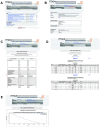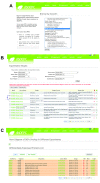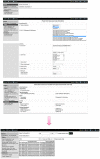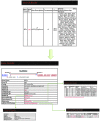Human cancer databases (review)
- PMID: 25369839
- PMCID: PMC4254674
- DOI: 10.3892/or.2014.3579
Human cancer databases (review)
Abstract
Cancer is one of the four major non‑communicable diseases (NCD), responsible for ~14.6% of all human deaths. Currently, there are >100 different known types of cancer and >500 genes involved in cancer. Ongoing research efforts have been focused on cancer etiology and therapy. As a result, there is an exponential growth of cancer‑associated data from diverse resources, such as scientific publications, genome‑wide association studies, gene expression experiments, gene‑gene or protein‑protein interaction data, enzymatic assays, epigenomics, immunomics and cytogenetics, stored in relevant repositories. These data are complex and heterogeneous, ranging from unprocessed, unstructured data in the form of raw sequences and polymorphisms to well‑annotated, structured data. Consequently, the storage, mining, retrieval and analysis of these data in an efficient and meaningful manner pose a major challenge to biomedical investigators. In the current review, we present the central, publicly accessible databases that contain data pertinent to cancer, the resources available for delivering and analyzing information from these databases, as well as databases dedicated to specific types of cancer. Examples for this wealth of cancer‑related information and bioinformatic tools have also been provided.
Figures







References
Publication types
MeSH terms
LinkOut - more resources
Full Text Sources
Other Literature Sources
Research Materials

